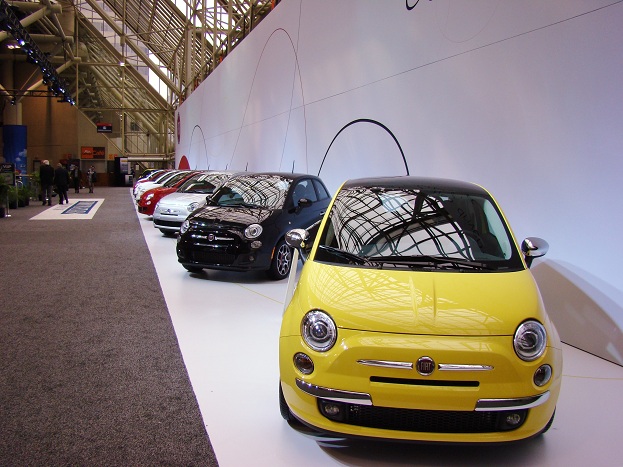 |
| Photo Credit: Fiat Chrysler Automobiles |
Introduced to the United States and Canada in 2010, the Fiat 500 represented the first physical addition to Chrysler’s merger with the Fiat Group in the North American marketplace. The classically-styled, European-derived vehicle made a handsome entrance supported by its chic appearance and a slick advertisement campaign. However, despite a strong debut for the subcompact car, sales have steady decreased over the years. After nine years visiting to left side of the Atlantic Ocean, the Fiat 500 will be departing.
When locking down their 2020 model year for the Fiat brand, parent company Fiat Chrysler Automobiles made a statement on the discontinuation of the Fiat 500 range. For 2019, the subcompact car lineup consisted of the base model hardtop, 500c Cabrio, performance-oriented Abarth and the all-electric 500e (sold in limited markets). Dealerships of Fiat Chrysler Automobiles’ will continue to maintain an inventory of 2019 subcompact car lineup that is expected to carry over into the 2020 calender year. Withdrawing the Fiat 500 product assortment, the Italian-themed brand will sell only three models in North America for the next model year. Fiat will continue to offer the 124 Spider, 500L and the 500X in their leaner market line.
 |
| Photo Credit: Chris Nagy/Car FYI |
Inspired by the original Fiat 500 that achieved almost 3.9-million in sales between 1957 and 1975, the current version of the compact car was introduced in 2007. Initially sold in Europe, the Fiat 500 was also available in Mexico starting in late 2008 while the United States and Canada waited two years longer for the vehicle. While the new iteration of the Fiat 500 incorporated a sleek Italian style reminiscent to the legendary subcompact that came before, the recreated model would differ greatly to better accommodate 21st century motoring. In addition to using more sophisticated mechanical and electronic technology for improved performance as well as comfort, the modern Fiat 500 featured a front-mounted engine as opposed to the rear powerplant found on the original model. The new variant of the car was also larger than its predecessor measuring 22.7 inches longer.
From 2011 until the midway point of this year, current era motorists in the United States and Canada were able to sample the spirit of smaller cars from the late 1950s through to the 1970s among three major revived marques. The Fiat 500 once-again was positioned in a rivalry between the Volkswagen Beetle and the MINI all existing in modernized forms. Volkswagen’s farewell to the Beetle for 2019 in addition to Fiat dropping the 500 ends the modern renaissance of an iconic small car battle.
Fiat Chrysler Automobiles decision to phase-out the Fiat 500 was a certainty for some time just from observing vehicle sales. In the United States, sales of the Fiat 500 peaked in 2012 with a sale volume of 43,772 vehicles but the Italian-styled subcompact car’s popularity steady slid since. Annual sales for the product dipped to 12,685 in 2017 and nosedived to 5,370 in 2018. Sales of the Fiat 500 in Canada for the 2016 calendar year were recorded at 2,965 but fell to 269 vehicles at the end of 2018.
The slumping demand of the Fiat 500 also coincides with the decreasing emphasis for passenger cars in North America as customer tastes seek taller and more rugged offerings. General as well as Ford Motor Company have both made drastic changes recently by reducing their sedans and smaller cars in favour of crossover vehicles. In the case of the Fiat brand, they’re retaining two crossover-style models as well as a niche sports car.
The slumping demand of the Fiat 500 also coincides with the decreasing emphasis for passenger cars in North America as customer tastes seek taller and more rugged offerings. General as well as Ford Motor Company have both made drastic changes recently by reducing their sedans and smaller cars in favour of crossover vehicles. In the case of the Fiat brand, they’re retaining two crossover-style models as well as a niche sports car.


Comments
Post a Comment